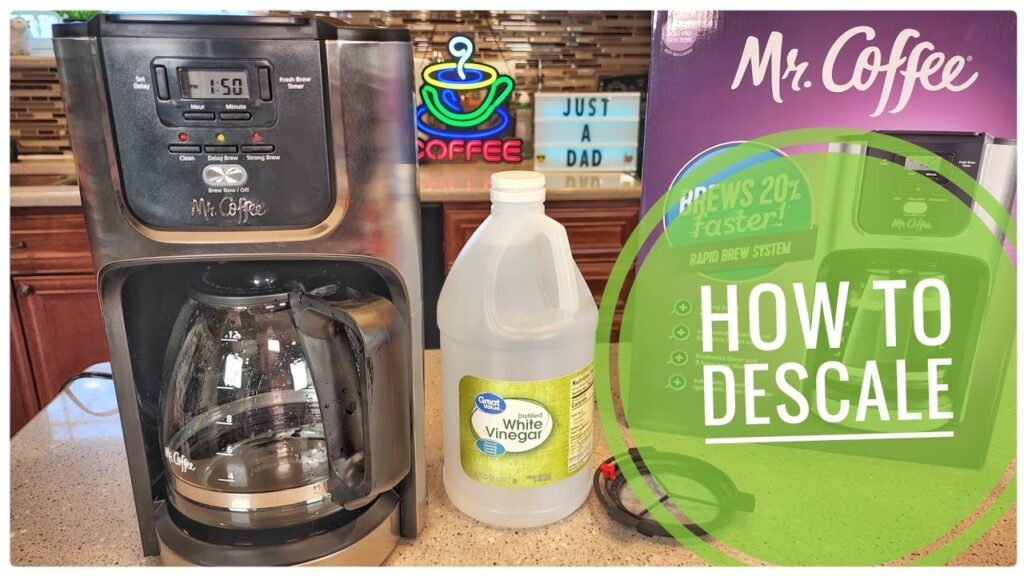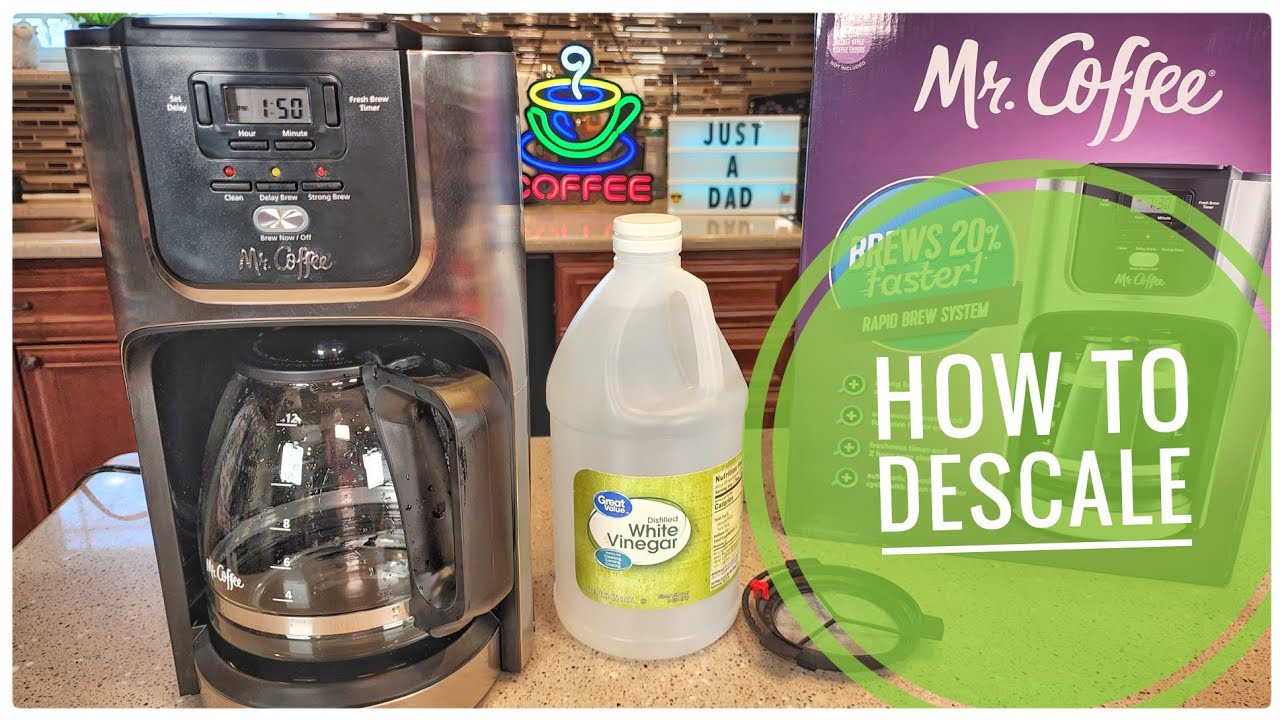
Descale Your Coffee Machine with Vinegar: A Comprehensive Guide
The aroma of freshly brewed coffee is a morning ritual for millions. But what happens when that perfect cup starts tasting a little…off? The culprit is often mineral buildup, or limescale, accumulating inside your coffee machine. This insidious enemy degrades performance and flavor. Fortunately, there’s a simple, cost-effective solution: descale a coffee machine with vinegar.
This guide will walk you through the process, ensuring your coffee machine continues to deliver the rich, flavorful brews you crave. We’ll cover the why, the how, and the important considerations to keep your appliance running smoothly for years to come. Understanding how to descale a coffee machine with vinegar is a crucial part of coffee machine maintenance, saving you money and ensuring the longevity of your appliance.
Why Descaling is Essential
Over time, the water used to brew your coffee leaves behind mineral deposits. This limescale, primarily composed of calcium and magnesium, coats the internal components of your coffee machine. This buildup is more pronounced in areas with hard water. The consequences are numerous:
- Reduced Performance: Limescale clogs the heating elements and water pathways, leading to slower brewing times and inconsistent temperatures. This results in a weaker, less flavorful coffee.
- Poor Taste: Mineral buildup can impart an unpleasant taste to your coffee, even if you’re using the best beans. The minerals interfere with the extraction process, affecting the coffee’s natural flavors.
- Appliance Damage: Left unchecked, limescale can cause irreversible damage to your coffee machine, leading to costly repairs or replacement. The heating element is particularly vulnerable.
- Hygiene Concerns: While not a primary health hazard, limescale buildup can harbor bacteria and mold, potentially impacting the cleanliness of your machine.
Regular descaling is the key to preventing these problems. It’s a proactive measure that protects your investment and ensures you enjoy the best possible coffee experience. The ability to descale a coffee machine with vinegar is a valuable skill for any coffee enthusiast.
Vinegar: The Descaling Champion
Vinegar is a readily available, inexpensive, and highly effective descaling agent. Its acidic properties readily dissolve mineral deposits without damaging your coffee machine’s internal components. White vinegar, in particular, is the best choice for descaling due to its high acidity and lack of added dyes or flavorings. The process to descale a coffee machine with vinegar is straightforward and requires minimal supplies.
Step-by-Step Guide: How to Descale a Coffee Machine with Vinegar
Follow these simple steps to effectively descale a coffee machine with vinegar and restore its optimal performance:
- Prepare the Solution: Mix equal parts white vinegar and water. For example, use 1 cup of vinegar and 1 cup of water. The amount you need will depend on your machine’s water reservoir capacity.
- Fill the Reservoir: Pour the vinegar-water solution into your coffee machine’s water reservoir.
- Run a Brewing Cycle: Place a carafe or mug under the coffee maker’s dispenser. Run a full brewing cycle as if you were making coffee.
- Let it Sit: Once the brewing cycle is complete, let the vinegar solution sit in the machine for approximately 30 minutes. This allows the vinegar to dissolve the mineral deposits more effectively.
- Run Another Brewing Cycle: After 30 minutes, run another full brewing cycle with the vinegar solution.
- Rinse Thoroughly: Empty the reservoir and rinse it thoroughly with clean water. Then, run several cycles with fresh water only, brewing a full pot of water each time, to remove any lingering vinegar taste or residue. This is crucial to ensure your next cup of coffee tastes as it should.
- Clean Exterior: While the machine is rinsing, wipe down the exterior with a damp cloth.
Following these steps consistently ensures you effectively descale a coffee machine with vinegar, maintaining its optimal performance and prolonging its lifespan. Remember to consult your coffee machine’s manual for any specific instructions or recommendations. The process can be slightly different depending on the type of machine you own.
Important Considerations and Precautions
While descaling with vinegar is generally safe and effective, there are a few important considerations:
- Machine Type: Some high-end coffee machines may have specific descaling requirements or even require proprietary descaling solutions. Always consult your machine’s manual before proceeding. For most standard drip coffee makers, the vinegar method is perfectly acceptable.
- Frequency: The frequency of descaling depends on your water hardness and how frequently you use your coffee machine. Generally, descaling every 1-3 months is recommended. If you live in an area with hard water, you may need to descale more frequently.
- Vinegar Strength: Use white vinegar with a standard acidity level (typically 5%). Avoid using stronger vinegars, as they could potentially damage your machine.
- Rinsing: Thorough rinsing is critical. Failing to rinse the machine adequately can leave a vinegar taste in your coffee.
- Alternatives: While vinegar is effective, commercial descaling solutions are also available. These solutions are often formulated to be more gentle on the machine’s components. However, vinegar is generally a more cost-effective option.
By adhering to these precautions, you can safely and effectively descale a coffee machine with vinegar and enjoy the benefits of a well-maintained appliance.
Troubleshooting Common Issues
Even with the best efforts, you might encounter some issues. Here’s a guide to troubleshooting:
- Persistent Vinegar Taste: Run additional rinsing cycles with fresh water. You might need to run several cycles to completely eliminate the vinegar taste.
- Slow Brewing: This could indicate significant limescale buildup. Descale the machine again, and consider descaling more frequently in the future.
- Machine Not Brewing: If the machine won’t brew at all, check the water reservoir, the filter basket, and the water pathways for blockages. If the problem persists, consult the machine’s manual or consider contacting a repair technician.
- Unusual Noises: Strange sounds during brewing can sometimes indicate a need for descaling. If the noise continues after descaling, there might be another issue requiring professional attention.
Troubleshooting helps ensure you can reliably descale a coffee machine with vinegar and maintain your machine’s performance.
Beyond Descaling: Maintaining Your Coffee Machine
Descaling is just one aspect of coffee machine maintenance. To keep your machine in top condition, consider these additional tips:
- Regular Cleaning: Clean the carafe, filter basket, and other removable parts after each use.
- Water Quality: Use filtered water, as this can reduce limescale buildup.
- Empty and Dry: Empty the water reservoir when the machine is not in use, and allow it to dry.
- Professional Servicing: Consider professional servicing periodically, especially for high-end machines or if you notice any performance issues.
By following these maintenance practices, you can further extend the lifespan of your coffee machine and enjoy consistently delicious coffee. Remember that the ability to descale a coffee machine with vinegar is a crucial part of this overall maintenance strategy.
Conclusion: Embrace the Simple Solution
Descaling a coffee machine with vinegar is a simple, effective, and affordable way to maintain your appliance and ensure the best possible coffee experience. By following the steps outlined in this guide and incorporating regular maintenance practices, you can enjoy the perfect cup of coffee for years to come. Don’t let mineral buildup ruin your morning ritual – take action and keep your coffee machine running smoothly! Regularly descaling your machine with vinegar is a proactive step towards coffee enjoyment.
[See also: Related Article Titles]


